The human ability to survive and adapt to harsh conditions seems to be limitless.
Winters in North America, especially during the pre-industrial era, were extremely harsh. Average temperatures in many regions of Canada ranged from -5 to -15 degrees Celsius for several months. Particularly, areas like the city of Winnipeg today can experience temperatures dropping from -20 to -30 degrees Celsius or lower.
Moreover, the continental climate brings bone-chilling winds, and its subarctic position means that winters are almost dark, with sunlight only peeking through for a few hours each day, accompanied by thick, white snow.
Under such conditions, how could the Indigenous peoples of North America survive for centuries without modern technology? Of course, they had warm clothing made of animal skins, but how did they find food under nearly one meter of snow for 3-4 months? What if women needed to give birth? Did their longhouses or winter tipis withstand extreme cold and hail?
Most importantly, why did these people choose to settle in the subarctic regions instead of migrating to warmer, more fertile southern areas?
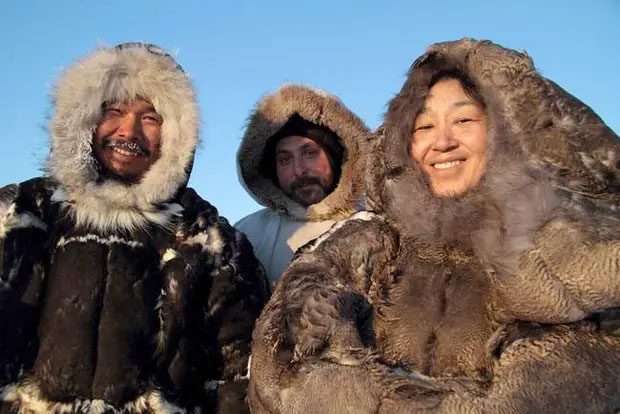
North American Inuit.
Historians’ Explanation
According to a history expert on Reddit, there is a common misconception that needs clarification.
It may sound paradoxical, but heavy snowfall is often a sign that the weather is becoming warmer. You might think logically that it must be very cold to have a lot of snow, but the issue is that temperature is not the only factor that creates snow; another crucial factor is humidity.
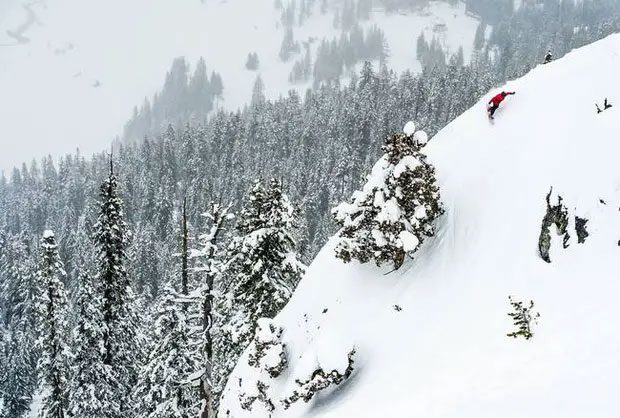
Snow can only fall heavily at a certain temperature.
In fact, snow can only fall heavily at a specific temperature, specifically from -10 degrees Celsius and above (measured close to the ground). If it is too cold, there won’t be enough humidity to produce snow. Meanwhile, humidity is often brought in from the sea, especially from warm ocean currents that have a high evaporation rate – this humid air will warm the local temperature to a certain extent.
Since heavy snow and extreme cold do not occur simultaneously, life is actually less harsh than what those who have never lived in subarctic regions might imagine “a little.”
Next is the issue of food. In most areas, winter food is stored from the summer. The food typically consists of fish, fruits, nuts, roots, and all necessary food items. In a large part of the communities living along rivers in British Columbia (Canada), food is mostly harvested at the right time and place according to the seasons.
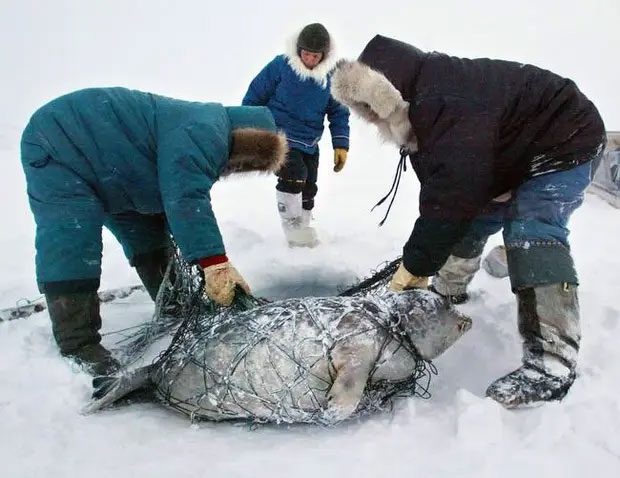
In most places, winter food is stored from the summer.
For meat, many Dene and Inuit groups often hunt North American caribou and bison on the vast northern plains. Notably, large hunting expeditions by the Métis (people of mixed European and Indigenous ancestry) occur once a year, involving thousands of participants.
These hunts do not take place in winter, and meat is preserved by smoking or drying. If hunting occurs in winter, it is usually done using traps. Elders recount that they survived most of their childhood by carrying many traps whenever they went camping, setting them at night, and checking them during the day. The food often consisted of rabbits and squirrels.
Generally, hunting in winter is usually just a backup plan in case of emergencies. Objectively speaking, it is also an effective population control method since many people can perish while hunting.
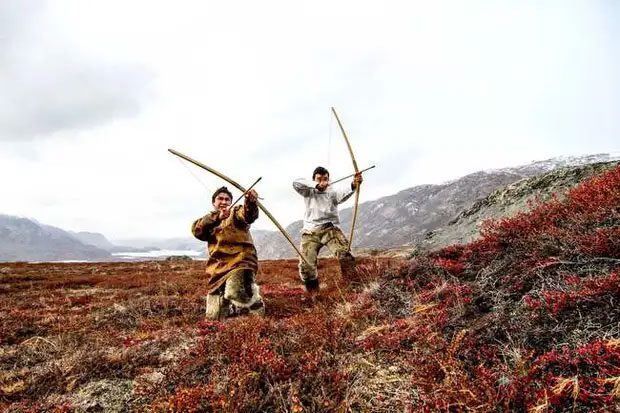
Hunting in winter is often just a backup plan in case of emergencies.
Regarding shelter, Indigenous peoples of North America are masters. In the far north, the Inuit often build igloos, snow caves, or even just a few windbreak walls made of snow in case they need temporary shelter at a specific location.
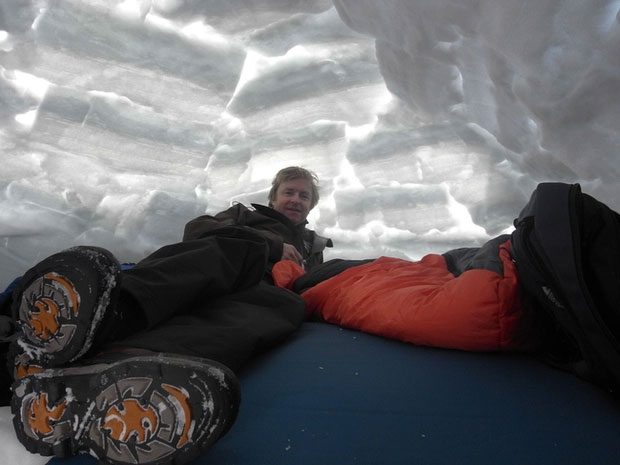
An igloo with good insulation.
In permanent settlements, they often reside in sturdy grass-roofed houses. These types of houses can be heated just by body temperature and oil lamps using seal fat. In the Mackenzie River basin and many other places, heating fuel is often driftwood from upstream, a practice that continues to this day.
Moving slightly south, such as in British Columbia, people often live in pithouses and many other special structures that can be easily erected. Archaeologist Harlan Smith listed up to 8 types of houses used by the Nuxalk and many other types by other Indigenous groups.
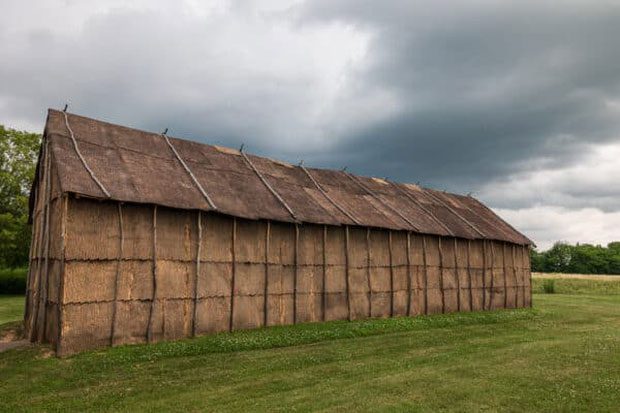
Longhouses of Indigenous Americans.
These houses are even warmer than those of modern residents. According to those who have stayed in a longhouse, it only takes one fire in the middle of the room to heat a large area.
Moreover, the human body can adapt to the cold. The Inuit can work with bare hands in -30 degrees Celsius without suffering frostbite, as their bodies continuously pump blood to their fingers to keep them warm (this process is much more effective than for those unaccustomed to living in cold conditions).
Finally, the clothing of Indigenous North Americans can sometimes withstand the cold better than modern insulating garments. They are often made from parts of animals that have extraordinary cold resistance, such as caribou fur coats and seal skin pants.
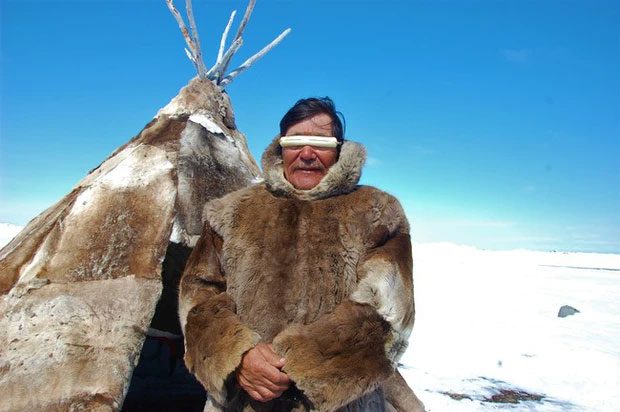
This type of clothing is still widely used today, not only because it provides excellent warmth but also because it is moisture and snow resistant.
The final question is, why do they still choose such a harsh life instead of migrating south? It is simply an economic issue. In fact, the north has many lucrative resources for those who dare to take on challenges and possess survival skills, such as seal skins, seal oil, seafood, whale fat…
Furthermore, competition in these areas is very low. Most of the population migrates from the north to the south, with very few instances of the opposite.


















































